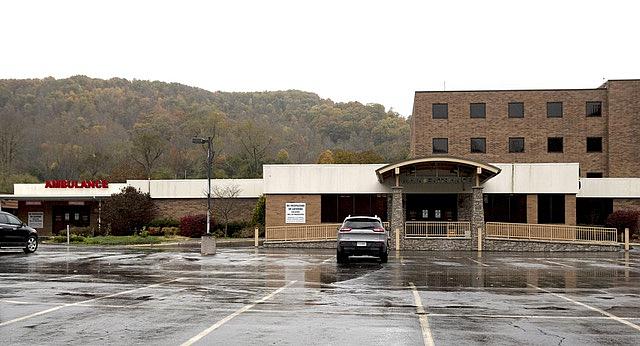Field Notes: A reporter goes deep in the coalfields of Central Appalachia

The Lee County Regional Medical Center in Pennington Gap was closed by Wellmont Health System in 2013. The hospital authority in 2017 partnered with Americore Health to reopen it.
(Photo Credit: Heather Rousseau/The Roanoke Times)
We were in a planning meeting in early January, reviewing the punch list of things yet to do before the launch of our series “Sick, Broke and Left Behind,” scheduled to run January 20, when I got a call that breaking news was overtaking our first story.
Virginia’s Lee County was about to begin divorce proceedings from its hospital partner that had failed to deliver on a bucketful of sweet promises.
We had already planned for the first story to focus on Lee County, which lost its hospital in 2013 and has been trying since to reopen it. The closing of this hospital was the catalyst for what would follow — the merging of two rival hospital systems in the coalfields of Virginia and Tennessee, and directives by both states to the new system to improve population health.
I hopped in the car the next day and headed for Lee County. I filed the first story from my car that Thursday night, got up early Friday, drove back to Roanoke and wrote Sunday’s story that afternoon.
For the past six months, I have spent much time traveling in the westernmost mountains of Virginia to better understand the lives and health of people living in Central Appalachia. Most Virginians live near D.C., or around Richmond and east toward the coastline. Roanoke, where I live, is considered by many to be the “western” outpost, yet the coalfields are still a hard four-hour drive from here.
We began the project knowing we wanted tell the story of how living in the coalfields means you are more likely to have heart disease, diabetes, addiction, and a long line of other ailments, and that you likely will die at a much younger age than if you lived anywhere else in Virginia. We wanted to better understand why that is and to explore ways to reverse this dynamic.
The region is the go-to place for helicopter reporting on poverty. On any given day, a reporter can swoop in and grab a jaw-dropping story. But we wanted to provide more than snapshots and to tell stories that also show the resilience and innovation arising from this region. We would not have been able to do this without the support of the Dennis A. Hunt Fund for Health Journalism.
This is not a region that is easily accessible. There are few places to stay: Of the two preferable places to stay in the coalfields, one hotel reserves the middle of its three stories for smokers. At the other, I slept in my coat one night because the only heat in the room was from of a glowing-orange space heater.
Finding something to eat that isn’t pizza or deep-fried is nearly impossible. I have experienced three ocular migraines in the past six months, when I had not had one in a few years, along with many tummy upsets. I share this not to gain sympathy but as a reflection. If this occasional diet causes me to feel ill, what would it do to you if consumed every day over a lifetime?
We have a dozen stories planned, and yes, the culture of food will be one of them. The second story on how Virginia came to expand Medicaid was published Jan. 27. I hope you will follow the series here. We hope that each story, different from the next, will help to build a clearer picture of the challenges of living in this remote area and of solutions that could help those lives be healthier and longer.

